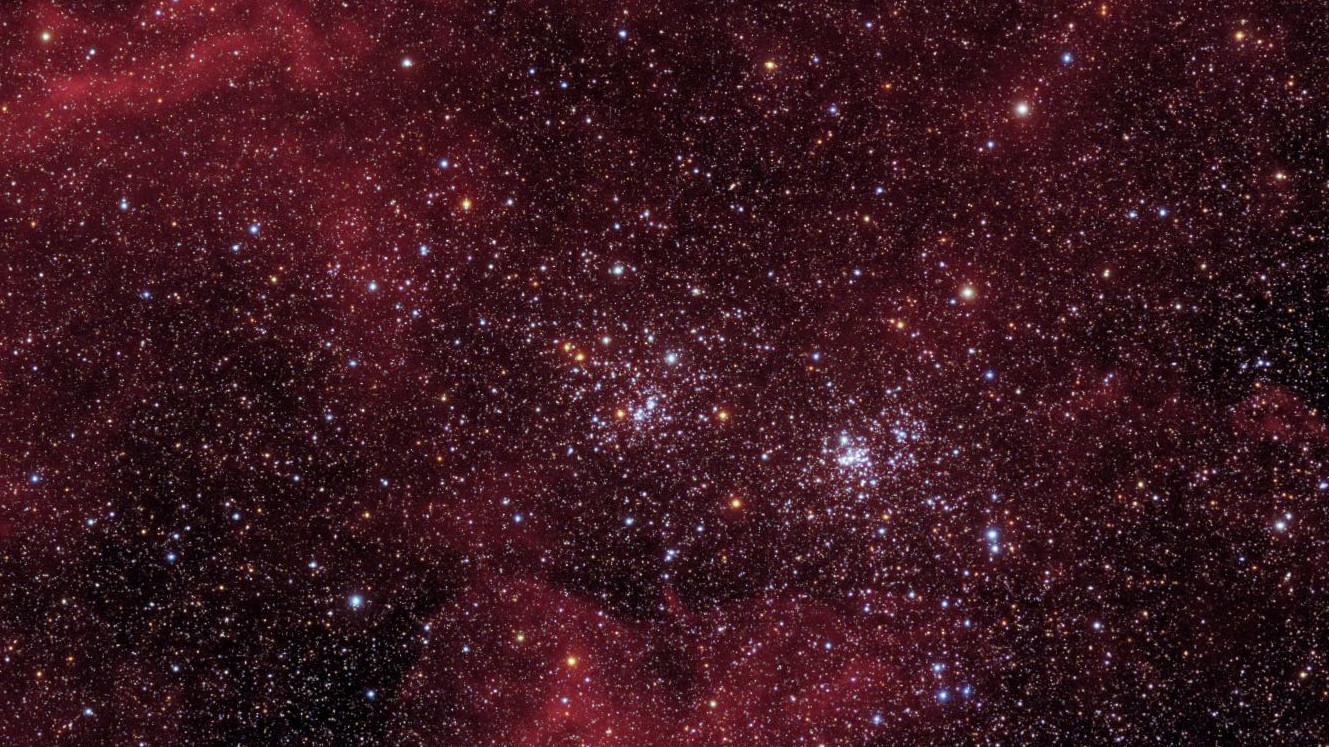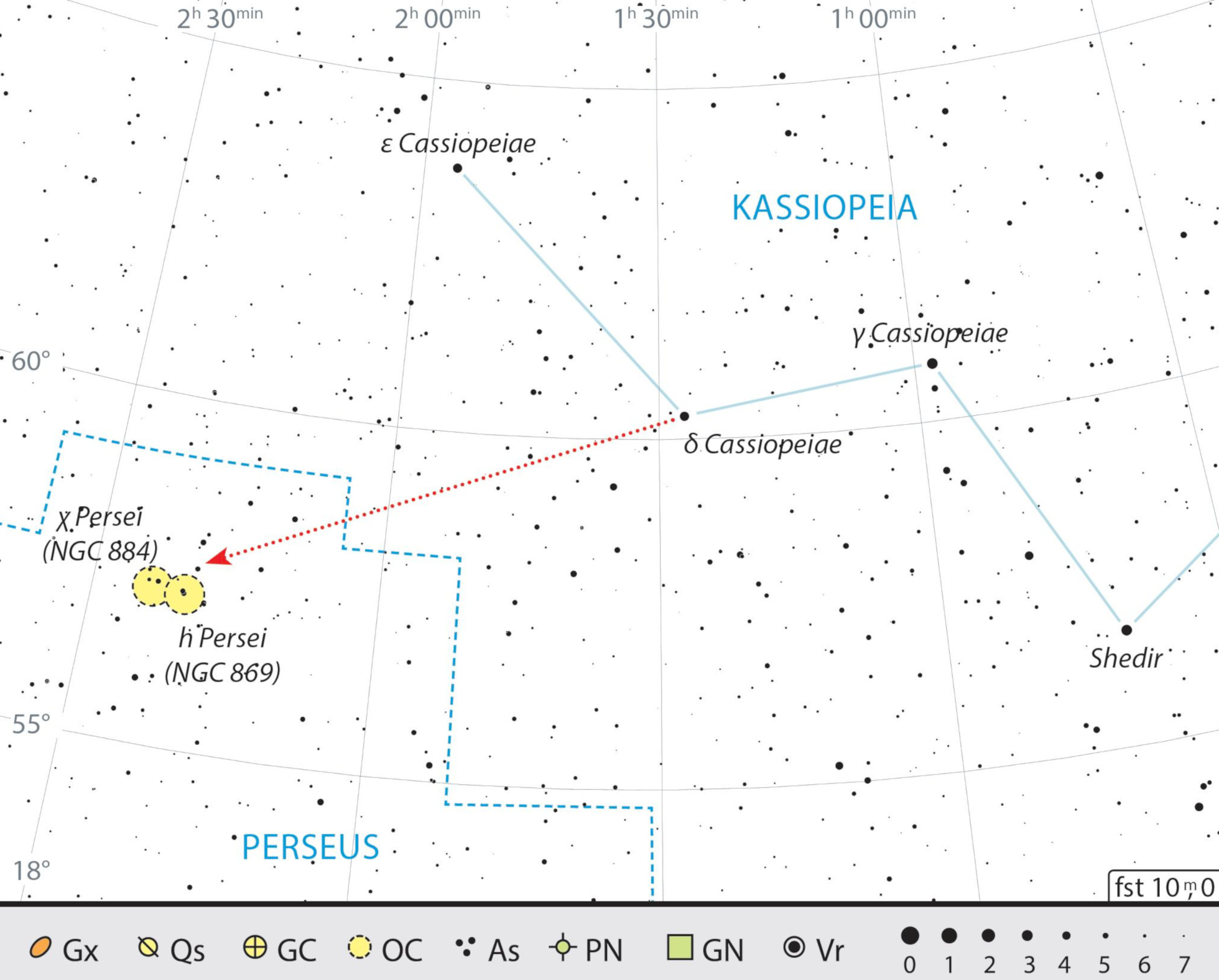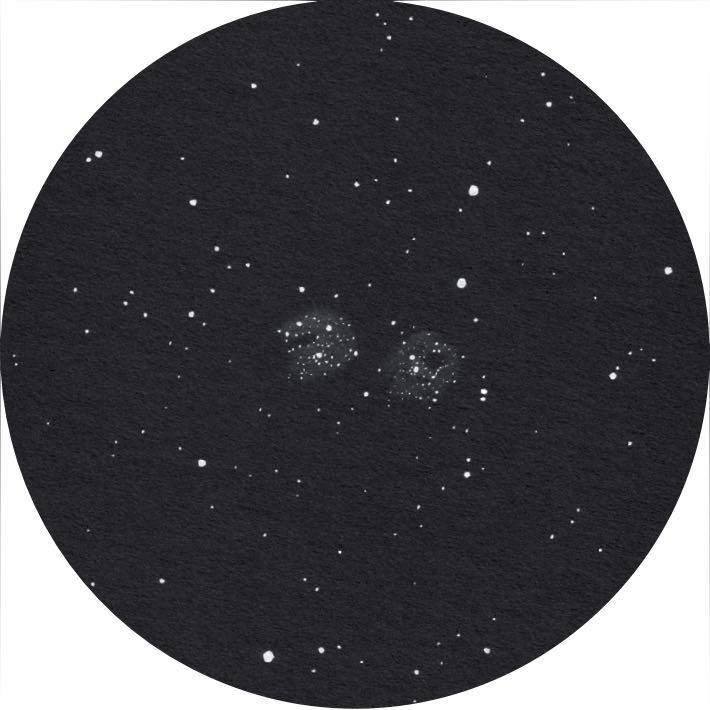The Double Cluster h and χ Persei
Whether you're using binoculars or a telescope, the Double Cluster in Perseus lives up to its reputation as a first-rate object!
 The Double Cluster h and χ Persei captured with a 4-inch refractor with 545 mm focal length. Fabian Neyer / CCD Guide
The Double Cluster h and χ Persei captured with a 4-inch refractor with 545 mm focal length. Fabian Neyer / CCD GuideThe Double Cluster NGC 869/NGC 884 in the constellation Perseus is better known to most star fans as h and χ (pronounced: Ha and Chi). Ancient writings by the Greek astronomer Hipparchus show that h and χ Persei were already observed more than 2,000 years ago. However, it was only in the 18th century that the English astronomer John Flamsteed acknowledged the objects as open clusters.
Colourful stars
The Double Cluster can even be seen with the naked eye as it is fairly large (20'/25') and bright (mag. 5.3/6.1). The best way to find it is to extend an imaginary line between γ and δ Cas by around twice as far again, towards the south-east. Even under a bright country sky, you can see a nebulous spot between Cassiopeia and Perseus which, upon closer inspection, appears elongated and divided into two parts. The spot represents the handle of Perseus's sword, so to speak.
In 8×30 binoculars you can already see two bright nebulous forms with some resolved stars. With a telescope, two luminous clusters reveal themselves, densely populated with blue-white, young stars. In addition, you can see some variable red giant stars that are orange in colour, between the two clusters for example, or close to the centre of χ Persei. This contrast in colour between the stars comes across very well in photographs. Under a dark country sky, the visual perception improves enormously, so that you are reminded of two sparkling clusters of diamonds against a black velvet background.
A fascinating sight, which even long-time hobby astronomers return to enjoy again and again.
 Finding chart for the Double Cluster h and χ Persei. J. Scholten
Finding chart for the Double Cluster h and χ Persei. J. ScholtenA real pair
 Drawing of h and χ Persei as seen with 20×125
binoculars. Uwe Glahn
Drawing of h and χ Persei as seen with 20×125
binoculars. Uwe GlahnBoth clusters belong to the so-called Perseus-OB1 association; a collection of blue, young stars of the O and B spectral classes. Cluster h is around 6,800 light years from Earth and χ around 7,600 light years distant. The clusters form a real pair. This makes the collection of more than 300 stars the only double cluster in our Milky Way known to this day.
In order to be able to admire both clusters in your field of view, you should choose a low magnification of around 30× to 50×. However, higher magnifications also have their appeal. From 100× onwards, the clusters are more detailed with binary and multiple stars. A small, curved chain of stars also reveals itself in NGC 869. Together with a nearby star, the chain looks like a tiny parachute.
It is always a pleasure to scan the Milky Way close to Cassiopeia with binoculars or a telescope, and then unexpectedly come across the two clusters. The three-dimensional sight of h and χ is one of the most impressive in the entire night sky, especially for large binoculars.
Author: Michael Feiler / Licence: Oculum-Verlag GmbH
